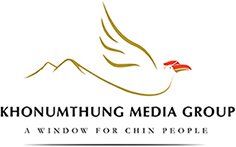There has been an outbreak of skin disease in ethnic Chin villages in Minbya Township, Rakhine State and sufferers are having difficulty getting medical treatment.
People have been affected in the villages of Dine Thar, Khwa Hsone, Htein Pin-Pauk Taw, Ngah Ta, and Chaung To.
After the Minbya Creek, which goes through Minbya Township, flooded in September 2024, villagers started suffering from a contagious skin disease characterised by itchy rashes affecting both children and adults, according to a healthcare worker helping the villagers.
There is a shortage of necessary medication and if residents can get hold of it they have to pay prices that are often seven times higher than they would normally be.
The health worker said: “When there is a shortage of medicine and prices are skyrocketing, patients cannot afford to buy them. Since they can’t afford to buy [Western] medicine, they have to treat themselves with traditional medicine. The healthcare system has been weak since the beginning [of the coup]. There [in the affected villages], the health workers are not affiliated with any government or organisation. They have to work on their own, I guess. I don’t think they get salaries. They want to treat [patients]but there’s no medicine, and with only one health worker for two or three villages, it’s very difficult. These are very tough situations.”
There are currently an estimated 300 cases of skin disease in the Chin villages along Panmyaung Creek in Minbya Township.
If the ethnic Rakhine villages in the area of the creek are also taken into consideration the total number of affected individuals, including both children and adults, could be around a thousand, though it has been challenging to collect exact figures for the number infected.


